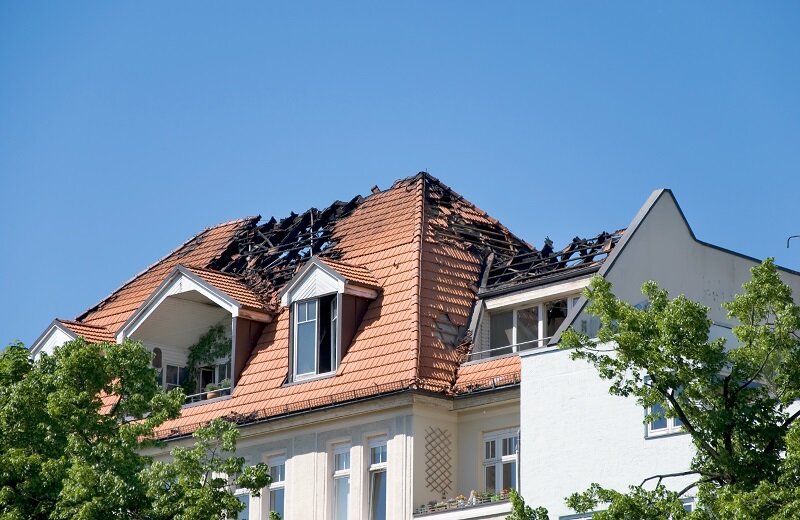
As homeowners, we work hard to maintain and protect our homes from harm. Unfortunately, disasters such as house fires can strike at any moment, leaving us with the daunting task of repairing fire damage, no matter if you’ve suffered from a small fire or a larger one.
A house fire can cause extensive damage, including water damage from the fire department’s efforts, structural damage, and a smoke odor that permeates every surface. It can be a traumatic experience to see your home in such a state, but it’s crucial to act quickly if you want to prevent any further damage.
Fire damage repair is a complex process that requires knowledge, skill, and expertise. It involves repairing the visible damage and addressing any hidden damage, such as mold growth or structural issues. To make matters even more complicated, dealing with insurance companies, the claims process, and restoration services can be overwhelming.
In this article, we’ve curated essential tips for repairing your fire damaged house that should make the process easier to understand and tackle. It’s especially important to follow this list if you want to attract cash home buyers in Arlington.
Repairing a Fire Damaged House
After a house fire, it’s essential to act quickly to prevent further damage. This may mean hiring a restoration company, addressing water damage, deodorizing smoke damage, and working with your insurance company.
Hire a Restoration Company
One of the first steps in repairing a fire damaged house is to hire a restoration company. These companies specialize in fire damage restoration and have the expertise and equipment to handle the restoration process. They can assess the extent of the damage and create a plan for repairing your fire damaged house. Hiring experts is one of the best early steps you can take after a house fire. They can take much of the planning and hard work off your hands.
Address Water Damage
Water damage is a common occurrence after a house fire, as the fire department’s efforts typically involve using water to extinguish the flames. Addressing water damage is crucial to prevent further damage and mold growth. Fire damage restoration services usually include water damage restoration.
Deodorize and Remove Smoke Damage
Smoke odor and smoke damage can be a serious issue after a house fire and end up being very difficult to remove from your home. Addressing these concerns as soon as possible is crucial. A restoration company can use specialized equipment to deodorize your home and remove smoke damage from surfaces.
Work with Your Insurance Company
Dealing with insurance companies can be overwhelming, but working with them is crucial to ensure you receive the necessary funds to repair your fire damaged house. A restoration company can work with your insurance company to ensure you receive the funds you need.
Understand the Restoration Process
It’s essential to understand the restoration process and what to expect while repairing your fire-damaged house. The company you hire can walk you through the process and answer any questions.
If you’re planning on selling a house with fire damage, following this list is especially important.
Cleaning the Fire Damage
Cleaning a fire damaged house is a complex process requiring time, effort, and expertise. After a fire, your home may be filled with debris such as ash, soot, and other materials. Removing this debris as soon as possible is crucial to prevent further damage. Soot residue and soot damage can be especially hard to get rid of.
Smoke odor can also be challenging to remove from your home, and it’s crucial to air out the house to complete effective odor removal. A restoration company can use equipment such as air movers and dehumidifiers to circulate fresh air throughout your home.
After debris removal and airing out the house, the restoration company will begin cleaning surfaces. This involves using specialized equipment and cleaning solutions to remove soot, smoke damage, and other contaminants from surfaces such as walls, ceilings, and floors.
Even after cleaning, a smoke odor may linger in your home. Your hired restoration company can use specialized deodorizing equipment and techniques to eliminate the smell. As mentioned earlier, water damage is a common occurrence after a house fire. Those working on your home can address water damage by removing standing water, drying out your home, and preventing mold growth.
Drying and Dehumidifying the House
Drying and dehumidifying your home is a critical step in the process of repairing a fire damaged house. Water damage resulting from firefighting efforts can lead to mold growth, which can cause health problems and further damage to your home.
The first step in this process is to assess the extent of the water damage in your home. It’s essential to address this issue as quickly as possible and determine the areas that require drying and dehumidifying.
Some of this work you can do yourself. But, if there is significant damage to your home, it’s highly recommended to hire a company that specializes in this form of restoration and that will be able to address all your restoration needs. The process involves using powerful water extraction equipment to remove standing water and air movers and dehumidifiers to dry out your home.
We buy houses Fort Worth residents love, and know that this process is a very important one whether you’re planning on selling your home or remaining in it!
Purifying Air in the House
Purifying the air in your house is an important step in repairing a fire-damaged home. Smoke and soot can cause serious health problems, and the smell of smoke can linger long after the fire is extinguished.
The first step in purifying the air in your house is to open all the windows and doors to allow for proper ventilation. This will help to remove any smoke or soot particles in the air. Next, you’re going to have to use or hire someone to use specialized equipment to clean the air in your house.
This includes using air scrubbers, which are machines that filter the air and remove any airborne particles, including smoke and soot. They may also use ozone machines designed to eliminate smoke odors.
It’s important to note that some items may be beyond repair and need replacing. This includes carpeting, upholstery, and curtains that have absorbed smoke and soot particles and cannot be adequately cleaned.
Deep Cleaning a Fire Damaged House
Deep cleaning a fire damaged house is a crucial step in the restoration process. Smoke and soot can penetrate every nook and cranny of your home, leaving behind a pervasive odor and damaging surfaces. Here are some ideas on how to deep clean a fire-damaged house:
- Start with Safety Gear: Wear appropriate safety gear, such as gloves, masks, and protective clothing, before you begin the deep cleaning. Smoke and soot particles can be hazardous to your health.
- Clean Walls, Ceilings, and Floors: Smoke and soot can damage walls, ceilings, and floors. Use a sponge or a cloth dampened with a specialized cleaning solution to remove the residue. Avoid using water or any water-based cleaning solution on drywall, as it can cause further damage.
- Clean Upholstery and Fabrics: Upholstery and fabrics can absorb smoke and soot particles. Clean them thoroughly with a specialized cleaning solution or have them professionally cleaned.
- Clean Hard Surfaces: Hard surfaces, such as countertops, cabinets, and appliances, also require deep cleaning. Use a specialized cleaning solution or a mixture of water and vinegar to remove the residue.
- Clean Air Ducts: Smoke and soot can accumulate in your home’s air ducts, spreading the odor. Have a professional clean the air ducts to remove any residue and improve the air quality in your home.

Repainting a Fire Damaged House
Repainting a fire-damaged house is a crucial step in the restoration process. It improves the home’s appearance, protects the walls from further damage, and seals any remaining smoke odors. Below are some key considerations to keep in mind when repainting a fire-damaged house, especially if you’re planning on selling a house in poor condition.
Choose the Right Paint
The paint you select for a fire-damaged house must be of high quality to provide sufficient coverage, seal in smoke odors, and prevent further damage. Be sure to look for paint labeled as “odor-blocking” or “stain-blocking.”
Prep the Surface
Preparing the walls before painting is critical to a successful paint job. Begin by cleaning the walls using a specialized cleaning solution to remove soot or residue. Sand the walls to create a smooth surface for the new paint to adhere to, and fill any holes or cracks using putty or spackle. Sand them down once again before painting.
Use a Primer
A primer is necessary when repainting a fire-damaged house. It helps seal any remaining smoke odors and provides a solid base for the new paint. Ensure that you choose a primer specifically designed for fire damage restoration.
Paint Application
Use a brush or roller and apply thin, even coats when painting. Allow each coat to dry thoroughly before applying the next coat. Depending on the extent of the damage, you may need to apply two or three coats of paint.
Documenting Fire Damage
Documenting fire damage is essential when filing insurance claims. Homeowners’ insurance policies typically cover damage caused by fires. Still, the insurance company will require detailed information about the extent of the damage and the restoration cost.
In Conclusion
Repairing fire damage is a complex process that requires knowledge, skills, and expertise. It’s important to hire restoration professionals to assess the extent of the damage and create a repair plan. This is especially important if you want to sell a house fast in Texas. You’ll need to address water damage caused by firefighting efforts to prevent further damage and mold growth, deodorize and remove smoke damage using specialized equipment, and work with insurance companies to receive the necessary funds.
